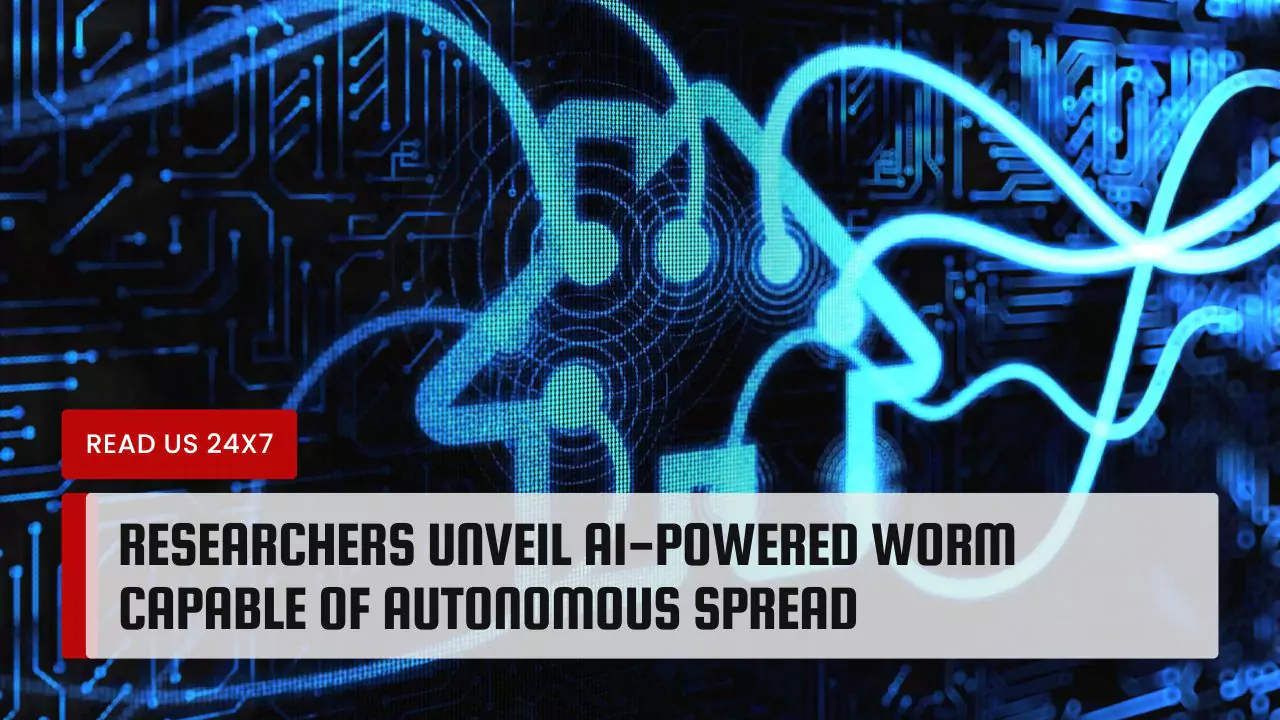Online safety is a growing concern for everyone using the internet. Researchers have recently introduced Morris II, an AI-powered worm that can spread across systems without human help.
This blog will guide you through understanding what AI worms are, their risks, and how to protect yourself from them. Stay safe online with our insights!
Understanding AI Worms
AI worms are self-replicating programs that spread across networks. They exploit generative AI systems to autonomously infiltrate and propagate through computer systems.
Definition and Explanation
AI worms are smart computer programs. They can move through the internet on their own. These worms use artificial intelligence to find and attack targets without needing a person to guide them.
Their main job is to spread from one system to another quickly.
For example, Morris II is an AI-powered worm that uses technology like ChatGPT and Gemini. It creates tricks to replicate itself across different systems. This worm aims at AI apps and email helpers that make text or pictures with Big Language Models (LLMs).
Morris II can sneak into email systems, read messages, and send out malware all by itself, making it a big danger for cybersecurity.
Exploitation of Generative AI Systems
Generative AI systems, like those used in AI apps and email assistants, are now under threat. Hackers exploit these systems using worms such as Morris II. This worm scans and reads emails without any human touching the keyboard.
It uses a method known as prompt injection to trick Large Language Models (LLMs) into performing unauthorized actions. This includes spreading malware or stealing data.
OpenAI, a leader in AI technology, recognizes the danger of these vulnerabilities. They are working hard to make their AI systems tougher against attacks like these. The goal is to prevent cybercriminals from using generative AI for harmful purposes.
Yet, as AI evolves, so do the tactics of those looking to exploit it.
Morris II stands out because it can spread by itself across many networks. It does not need a person to click on anything to move from one system to another. This makes it very dangerous and shows why strong cybersecurity measures are vital.
Each new version of an AI system must be built with defense mechanisms against such sophisticated threats.
Risks and Vulnerabilities of AI Worms
AI worms pose a risk through autonomous spread between systems and potential data theft. Strong cybersecurity measures are crucial to prevent malware dispersion.
Autonomous Spread Between Systems
AI-powered worms like Morris II have a unique ability. They can move from one computer system to another on their own. This means they can spread malware without needing someone to click a link or download a file.
These worms exploit weaknesses in AI systems, targeting tools such as OpenAI’s ChatGPT and Google’s Gemini.
Once they enter a system, these worms don’t stop. They search for other vulnerable systems and jump into them, spreading quickly. This autonomous movement makes them very dangerous because it happens silently and swiftly, behind the scenes where users might not notice until it’s too late.
Data Theft and Malware Dispersion
AI worms like Morris II have the capability to autonomously spread across networks and deceive AI systems into unauthorized actions. These malicious applications target AI apps and email assistants that use Large Language Models (LLMs) to generate text and images.
Using ChatGPT and Gemini, these worms can spread malware, potentially leading to data theft and spam email distribution. The self-replicating nature of Morris II enables it to deceive AI systems, posing a significant risk to cybersecurity.
Security researchers have successfully created an AI worm in a controlled environment that can automatically spread between generative AI agents, highlighting the potential for widespread data theft and malware dispersion.
This demonstrates the urgency for robust cybersecurity measures such as security protocols and regulations to mitigate the risks posed by these advanced cyber threats.
Importance of Strong Cybersecurity Measures
To mitigate the threats posed by AI-powered worms like Morris II, implementing robust cybersecurity measures is critical. Utilizing advanced encryption methods and multi-factor authentication can fortify systems against unauthorized access and data breaches.
Regular software updates, network monitoring, and intrusion detection systems are vital tools to detect and prevent potential cyber intrusions.
In February 2024, the White House emphasized reducing the attack surface in cyberspace as crucial for safeguarding the nation’s digital ecosystem. This underscores the necessity of adopting proactive security practices such as employee training on recognizing phishing attempts and enforcing strict access controls.
Current Research and Developments
Recent research has introduced AI worms like Morris II and ComPromptMized, showcasing the potential implications and developments in autonomous malware spread. These advancements signal a pressing need for strong cybersecurity measures to combat the rising threat of AI-driven cyberattacks.
Examples of AI Worms Like Morris II and ComPromptMized
Researchers have developed AI-powered worms such as Morris II and ComPromptMized.
- Morris II is an AI – powered worm that spreads malware using ChatGPT and Gemini, targeting AI apps and email assistants that generate text and images using Large Language Models (LLMs).
- ComPromptMized is another AI worm designed to exploit vulnerabilities in AI – powered applications, particularly those utilizing tools like OpenAI’s ChatGPT and Google’s Gemini.
- Both worms represent the potential cybersecurity threat posed by the exploitation of AI systems for malicious purposes, highlighting the need for robust security measures.
Potential Implications and Developments
The AI-powered worm Morris II poses a significant cybersecurity threat by autonomously spreading malware and exploiting vulnerabilities in AI-powered applications. This could lead to data theft and spam emails, as seen in the test environment where an AI worm automatically spreads between generative AI agents.
The potential for such worms to cause widespread damage emphasizes the importance of strong cybersecurity measures and regulations to mitigate these risks.
Developments like Morris II and ComPromptMized highlight the urgent need for enhanced AI security protocols, especially with the increasing use of tools like GPT-4 and Gemini on social media platforms.
The White House Office of the National Cyber Director has called for reducing the attack surface in cyberspace due to these potential implications. As technology advances, it is crucial to address ethical concerns and consider future implications regarding privacy and misuse by malicious actors in this rapidly changing landscape.
These developments underscore the importance of staying ahead of evolving cyber threats through proactive measures and ethical considerations in both AI development and cybersecurity.
Ethical Concerns and Future Implications
AI worms raise ethical concerns about data privacy and the potential for misuse by malicious actors. Regulations and guidelines are imperative to address the ethical considerations in AI development and mitigate the potential for AI-driven cyberattacks.
Effects on Data Privacy
AI worms, like Morris II, pose a severe threat to data privacy. They exploit vulnerabilities in AI applications and email assistants, potentially leading to data theft and unauthorized access to sensitive information.
These worms can autonomously spread between systems, increasing the risk of personal and corporate data being compromised.
The potential implications of AI worms on data privacy are significant. The autonomous nature of these worms enables them to propagate rapidly, making it challenging for traditional cybersecurity measures to detect and contain them effectively.
Misuse by Malicious Actors
Malicious actors exploit AI-powered worms to steal sensitive data, bypassing traditional security measures. These bad actors can utilize the worm’s autonomous spreading capabilities to infiltrate computer systems and compromise databases, leading to widespread cybercrime.
The potential for AI-driven cyberattacks heightens the urgency for implementing regulations and guidelines to curb misuse by malicious entities.
Furthermore, ethical concerns arise as hackers leverage AI worms’ ability to operate independently, posing significant threats to data privacy and system integrity. Without proper safeguards in place, the misuse of AI worms by malicious actors could result in devastating consequences for individuals and organizations alike.
Need for Regulations and Guidelines
Regulations and guidelines are necessary to control the potential risks posed by AI worms. The White House Office of the National Cyber Director has emphasized the need to reduce cyberspace’s attack surface to safeguard the digital ecosystem and national security.
These regulations can address vulnerabilities exploited by autonomous AI worms, thereby mitigating data theft, malware dispersion, and cyber attacks.
In response to ethical concerns and future implications, regulations should be put in place to combat misuse by malicious actors. Implementing stringent cybersecurity measures is imperative as AI-driven cyberattacks become increasingly feasible.
Potential for AI-driven Cyberattacks
AI-driven cyberattacks present significant risks to data security and privacy. Morris II, an AI-powered worm, exemplifies the potential for autonomous malware to spread without user interaction.
The use of Large Language Models (LLMs) in generating text and images heightens vulnerability to such attacks, emphasizing the urgent need for robust cybersecurity measures.
The development of AI worms like Morris II underscores the necessity for proactive defense strategies within computer systems. With malicious actors exploiting vulnerabilities through AI-enabled applications, there is a pressing need to address these emerging threats through innovative cybersecurity solutions and heightened vigilance.
Moving forward, it’s essential for organizations to remain vigilant against evolving cyber threats as they navigate the complex landscape of AI-driven vulnerabilities with a clear emphasis on preventative action.
Ethical Considerations in AI Development
AI development raises ethical concerns due to potential misuse and negative impacts on data privacy and cybersecurity. The creation of AI-powered malware, such as the Morris II worm, highlights these considerations as it exploits vulnerabilities in AI applications.
Furthermore, technology companies like Microsoft and Apple face increased regulatory scrutiny regarding responsible AI development amidst competition for dominance in AI technology.
As AI continues to advance, the need for regulations and guidelines becomes crucial to prevent malicious actors from exploiting this powerful technology. Additionally, the potential for AI-driven cyberattacks emphasizes the importance of ethical considerations in developing and deploying AI systems to ensure their responsible use and safeguard against harmful consequences.Research Paper: https://drive.google.com/file/d/1pYUm6XnKbe-TJsQt2H0jw9VbT_dO6Skk/view



